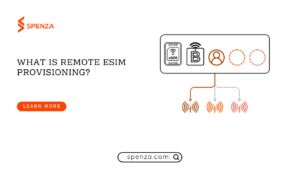Table of Contents
- Introduction to MVNEs
- What is a Mobile Virtual Network Enabler (MVNE)
- What is the role of MVNEs in the telecommunications ecosystem
- Why the Right MVNE Partner Matters
- Impact on business operations and profitability
- How MVNEs influence time-to-market
- What is the connection between MVNE selection and customer experience
- Key Selection Criteria for MVNE Providers
- Network coverage and quality assessment
- Technical capabilities and platform features
- Scalability and flexibility options
- Integration capabilities with existing systems
- Contract Terms and SLAs
- Security and compliance standards
- Evaluating MVNE Service Offerings
- Core services (billing, provisioning, customer support)
- Value-added services and differentiation factors
- eSIM and emerging technology support
- Multi-carrier options and global reach
- MVNE Pricing Models and Cost Considerations
- Common pricing structures
- Hidden costs to watch for
- Negotiation strategies for better terms
- ROI calculation for MVNE partnerships
- Specialized MVNE Solutions for Different Business Needs
- Enterprise-focused MVNEs vs. consumer-focused options
- Regional vs. global MVNE providers
- Key questions to ask potential MVNE providers
- Power Your MVNO with Spenza’s Lightweight MVNE
- Operator-neutral platform for smaller MVNOs
- Tech enablement approach vs. managed services
- Self-service operations model for MVNO independence
- Multi-operator marketplace and customizable plans
- APIs, SaaS platforms, and white-label consumer apps
- IoT and connected device specialization
- Conclusion: Making Your Final Decision
- FAQs

Introduction to MVNEs
What is a Mobile Virtual Network Enabler (MVNE)?
A Mobile Virtual Network Enabler (MVNE) is a company that provides the necessary infrastructure and services to Mobile Virtual Network Operators (MVNOs). This allows MVNOs to offer mobile services without owning a network. By working with an MVNE, businesses can launch mobile services much faster than if they built these capabilities, often reducing the time-to-market from years to months.
What is the role of MVNEs in the telecommunications ecosystem?
MVNEs play a crucial role in the telecommunications industry by connecting network owners (MNOs) with service providers (MVNOs). Their technical expertise helps companies without a telecommunications background enter the mobile market quickly and affordably.
In the fast-changing telecommunications landscape, MVNEs offer essential services such as:
- Negotiating network access with multiple MNOs
- Providing and managing SIM/eSIM cards
- Setting up billing and charging systems
- Offering customer relationship management platforms
- Ensuring regulatory compliance
- Managing technical integration and operations
Why the Right MVNE Partner Matters
Choosing the right MVNE provider significantly affects your business operations and profitability. A good partner offers seamless technical integration, reliable service, and scalable solutions that support your business growth. On the other hand, a poor choice can lead to service disruptions, unhappy customers, and unexpected costs.
Impact on business operations and profitability
MVNEs impact your cost structure through their pricing models and operational efficiencies. A suitable MVNE partner helps manage expenses by providing the following:
- Economies of scale with shared infrastructure
- Lower capital expenditure needs
- Streamlined operations
- Efficient billing and revenue collection
How MVNEs Influence Time-to-Market
In the competitive telecommunications industry, speed to market can determine success or failure. Professional MVNE providers accelerate launch timelines by offering pre-built systems and established MNO relationships, enabling businesses to capitalize on market opportunities quickly. MVNEs address the technical complexities of launching an MVNO, such as network integration and regulatory compliance, providing ready-to-use solutions that significantly reduce development time.
What is the connection between MVNE selection and customer experience?
The MVNE you choose has a significant impact on your customers’ experience. It shapes things like how good the network is, billing accuracy, and how well customer service works. These pieces make up the customer’s journey and determine if they’re happy or not. Situations like the service going down or billing errors can hurt how people see your brand, even if the MVNE caused them. So, it’s key to pick a trustworthy provider with solid systems and a track record of good performance. This helps maintain your reputation and customer loyalty.
What are the key selection criteria for MVNE providers?

1. Network Coverage and Quality
A strong mobile service depends on good network coverage and quality. When choosing an MVNE, check their partnerships with MNOs and the coverage they offer. Key factors to consider:
- Coverage in your target areas
- Network reliability and uptime
- Data speeds and capacity
- Support for 4G/5G
- Roaming and international access
2. Technical Capabilities and Features
An MVNE’s platform should be strong and flexible to support your services efficiently. Look for key features like:
- Real-time billing and charging
- Flexible product management
- Automated provisioning
- Customer self-service portals
- APIs for easy integration
- Analytics and reporting tools
Advanced MVNEs also offer eSIM support, IoT management, and AI-powered customer service to help you stand out.
3. Scalability and Flexibility
Your MVNE should grow with your business without disruptions. Key factors to assess:
- Handling rapid subscriber growth
- Launching new services easily
- Custom feature development
- Managing peak traffic
- Expanding capacity smoothly
4. Integration Capabilities
Your MVNE should seamlessly connect with your CRM, ERP, and other business systems. Key factors to look for:
- Robust APIs for smooth data flow
- Easy integration with existing platforms
- Quality documentation and support
- Automation to reduce manual work
5. Contract Terms and SLAs
Choose an MVNE with fair contract terms and strong service level agreements (SLAs). Key factors to consider:
- Clear uptime and performance guarantees
- Flexible contract terms
- Vendor switching options without major disruptions
- Transparent pricing and fees
6. Security and Compliance
Your MVNE must follow strict regulations and protect customer data. Key considerations:
- Strong data protection and privacy controls
- Regulatory reporting compliance
- Fraud management systems
- Identity verification processes
- Business continuity and disaster recovery plans
Evaluating MVNE Service Offerings

1. Core services
A good MVNE provider should perform well in essential areas that support your business. It should be excellent in the below key aspects:
- Billing: Supports complex pricing, real-time tracking, multiple payment methods, and automated processes.
- Provisioning: Ensures smooth activation with automation and error handling.
- Customer Support: Provides multi-channel support (voice, chat, email, self-service) for fast issue resolution.
2. Value-added services and differentiation factors
Beyond core capabilities, leading MVNEs offer value-added services that provide competitive advantages for your business:
- White-label apps and customer portals
- Enhanced analytics and business intelligence
- Digital onboarding and identity verification
- AI-powered chatbots and virtual assistants
- Multi-language support
- Number portability management
3. eSIM and emerging technology support
The telecommunications industry continues to evolve rapidly with new technologies transforming service delivery. Forward-thinking MVNEs invest in emerging technologies like:
- eSIM provisioning and management
- IoT connectivity solutions
- 5G network capabilities
- Blockchain for security and billing
- Machine learning for predictive customer service
4. Multi-Carrier Support & Global Reach
The ability to leverage multiple carrier networks provides significant advantages in coverage, redundancy, and pricing leverage. A strong MVNE offers:
- Access to multiple carriers for better coverage, reliability, and pricing
- Reduced dependence on a single network
- Global reach with regulatory expertise and local payment options
MVNE Pricing Models and Cost Considerations
Common MVNE Pricing Models
MVNEs use different pricing structures, each affecting business costs:
- Subscription Model: Fixed regular fee for platform and services.
- Custom Pricing: Tailored costs for specialized features or integrations.
- Per-Subscriber Fees: Monthly charges per active user.
- Platform Licensing: Fees for access to core systems.
Choosing the right model is key for financial planning and profitability.
Hidden Costs to Watch For
In addition to standard pricing, be aware of hidden expenses that can affect your budget:
- Integration and implementation fees
- Training and support expenses
- Customization and development charges
- Minimum volume commitments
- Early termination penalties
- Feature upgrade costs
- Data storage and processing fees
Request detailed pricing information that addresses all potential cost elements to avoid surprises after commitment.
Negotiation Strategies for Better Terms
To secure the best deal with an MVNE provider, use these tactics:
- Compare Offers – Evaluate multiple providers to find the best fit.
- Show Growth Potential – Emphasize your long-term value.
- Request Volume Discounts – Negotiate lower rates based on future growth.
- Negotiate Implementation Fees – Adjust costs based on contract length.
- Seek Performance Guarantees – Ensure financial remedies for service issues.
A well-structured agreement aligns incentives and fosters a strong partnership.
ROI calculation for MVNE partnerships
To evaluate the return on investment (ROI) of an MVNE partnership, consider these key factors:
- Initial implementation costs
- Ongoing operational expenses
- Time-to-market acceleration value
- Customer acquisition cost reduction
- Operational efficiency improvements
- Revenue enhancement opportunities
Compare total MVNE costs with alternatives like in-house solutions or direct MNO partnerships for a complete ROI analysis.
Specialized MVNE Solutions for Different Business Needs
Enterprise-focused MVNEs vs. Consumer-focused options
MVNEs serve different market segments. Use this table to compare enterprise-focused and consumer-focused MVNEs. Choose one that fits your target market and business model.
| Feature | Enterprise-focused MVNEs | Consumer-focused MVNEs |
|---|---|---|
| Primary Market | Businesses & corporate clients | Individual consumers & retail markets |
| Key Strengths | Secure communications, device management, employee mobility programs | Customer acquisition, retail distribution, competitive plan management |
| Platform Focus | Security, scalability, enterprise integrations | User experience, omnichannel marketing, flexible billing |
| Billing Model | Enterprise contracts, volume-based pricing | Consumer-friendly plans, prepaid & postpaid options |
| Customer Support | Dedicated business support teams, SLA-backed services | Scalable consumer support, automated self-service tools |
| Marketing Approach | B2B strategies, direct enterprise sales | B2C strategies, digital & retail marketing |
Regional vs. global MVNE providers
An MVNE’s geographic focus affects its services and regulatory expertise. Select one that aligns with your business goals.
| Feature | Regional MVNE Providers | Global MVNE Providers |
|---|---|---|
| Geographic Focus | Specific countries or regions | Multiple countries or worldwide coverage |
| Market Knowledge | Deep understanding of local regulations, consumer behavior, and carrier relationships | Broad but less specialized local market knowledge |
| Regulatory Expertise | Strong compliance with local telecom laws | Experience with international regulations but may lack local nuances |
| Network Partnerships | Strong relationships with domestic carriers | Agreements with multiple international carriers |
| Service Consistency | Optimized for local performance and reliability | Seamless cross-border connectivity |
| Scalability | Best for businesses focused on specific markets | Suitable for businesses expanding internationally |
| Cost Efficiency | Competitive local pricing and tailored solutions | Economies of scale for global operations but may have higher overhead |
Key questions to ask potential MVNE providers
- What carrier networks do you support, and what is the quality of those relationships?
- How does your pricing model align with my business economics?
- What is your typical implementation timeline, and what factors might affect it?
- How do you support integration with my existing business systems?
- What ongoing support do you provide after implementation?
- How do you stay current with emerging technologies and market trends?
- Can I speak with current customers similar to my business?
By thoroughly evaluating these aspects and asking detailed questions, you’ll be well-positioned to select an MVNE provider that aligns with your business objectives and supports your long-term success in the telecommunications market.
Power Your MVNO with Spenza’s Lightweight MVNE

1. Operator-neutral platform for smaller MVNOs
Spenza offers a neutral platform for small MVNOs, providing unbiased access to multiple networks. This approach helps smaller businesses by offering essential services without the complexity and high costs of larger providers. It allows for quicker setup and lower entry costs while still delivering the necessary features for success.
2. Tech enablement approach vs. managed services
Spenza focuses on providing technology rather than managed services, unlike traditional MVNEs. This approach offers several advantages:
- Lower costs by avoiding service management fees
- More flexibility to tailor operations to your business needs
- Quicker setup without complex agreements
- Direct control over customer experience and service quality
- Opportunity to develop internal skills and capabilities
3. Self-service operations model for MVNO independence
Spenza’s platform lets MVNOs manage their operations independently using easy-to-use self-service tools. This allows businesses to quickly adapt to market changes and customer needs without relying on third-party providers. The self-service model includes dashboards, automated workflows, and tools that simplify telecommunications processes, reducing costs and building internal skills.
4. Multi-operator marketplace and customizable plans
Spenza’s platform features a marketplace where MVNOs can choose from various mobile plans offered by different carriers. This allows for custom solutions tailored to specific customer needs. Benefits include:
- Better coverage based on customer locations
- Competitive pricing by comparing different carriers
- Specialized plans for different devices and usage patterns
- Less reliance on a single network provider
- Quick adaptation to market changes
5. APIs, SaaS platforms, and white-label consumer apps
Spenza provides APIs, a SaaS platform, and white-label consumer apps to help launch and run an MVNO quickly. This setup allows for easy integration with existing systems and offers flexibility for customization. The SaaS model ensures continuous updates without disruptions, while white\-label apps provide a professional, branded interface for customers, reducing time-to-market.
6. IoT and connected device specialization
Spenza specializes in IoT connectivity, making it a great choice for businesses using connected devices. The platform offers:
- Customizable low-bandwidth plans for sensors and monitors
- Billing based on actual usage
- Multi-operator SIMs with configurable network preferences
- Real-time device monitoring tools
- Global connectivity options
These features help B2B and B2C device vendors offer bundled connectivity, enhancing product value and creating recurring revenue.
Conclusion: Making Your Final Decision
Selecting the right MVNE provider is essential for launching a successful MVNO. This decision affects your technical capabilities, operational efficiency, customer experience, and market competitiveness. When evaluating potential partners, consider your business needs, their market focus, technical abilities, pricing, and support. Look for providers with proven experience in your target market. For smaller or specialized MVNOs, lightweight solutions like Spenza offer speed, flexibility, and cost-efficiency, along with independence and adaptability.
FAQs
Look for technical capabilities that match your needs, proven carrier relationships, and scalable platforms.
Spenza offers multi-carrier eSIM support, customizable billing solutions, and real-time analytics in one platform.
Full MVNE service provides end-to-end solutions including billing, provisioning, and carrier management. Component-based services let you select only what you need.
Spenza specializes in IoT connectivity management with features like per-device data plans, automated provisioning, and usage-based billing models.
Assess your business needs for technical support and network access. Choose an MVNE if you need technical capabilities, and an MVNA if you need network access.
Ready to explore how Spenza can support your MVNO ambitions? Request a demo to see the platform’s capabilities firsthand.






